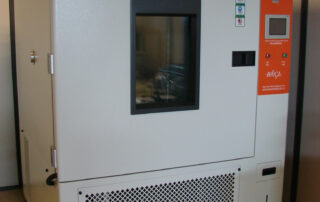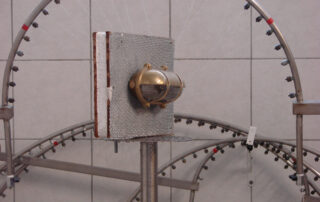Product Testing – CE
CE marking is a mandatory European marking for certain product categories. It indicates compliance with the essential health and safety requirements set out by the relevant EU Directives.
The CE marking may be affixed to a product if it falls within the scope of at least one of the 22 EU New Approach directives. A product without the CE marking and therefore without complying with the requirements as specified in the directives that apply to it, should not be on the EU market. On the other hand, if the product fulfills the requirements of the directives that apply to it, then no EU country can prohibit, restrict or impede its circulation in its territory. For this reason, the CE marking is also considered as the trade passport of the products. The CE marking is not a quality label but refers more to safety than to product quality. Most product quality labels are voluntary for manufacturers, unlike the CE mark, which is mandatory for the products to which they apply. CE indicates compliance with European safety requirements, and is established by following clear and distinct procedures called “compliance verification procedures”. For most types of products, affixing the CE mark presupposes the existence of the Technical File, the key element of which is the Test Reports.
Electrical Safety Testing
The Low Voltage Directive 2014/35/EU applies to electrical equipment intended to be used at a rated voltage between 50 and 1000 V for alternating current and between 75 and 1500 V for direct current. By implementing the requirements of the directive, the required basic level of electrical safety of the devices is ensured. In our laboratory, type tests are carried out in accordance with harmonized European Standards (EN Standards) that provide presumption of conformity with this Directive. Example of tests performed under most of the harmonized standards are: Dielectric strength, Earthing resistance, Insulation resistance, Leakage current measurement, Tracking test, Glow-wire test, Electromagnetic field measurement, etc.
Energy Efficiency Testing
Directive 2009/125/EC establishing a framework for the setting of ecodesign requirements (Ecodesign Directive) applies to energy-related products in order to reduce their environmental impact and achieve energy savings through better design. In our laboratory there are three chambers for measuring the energy efficiency of domestic hot water storage water heaters, indirectly heated hot water storage water heaters (boiler), instantaneous water heaters, professional storage cabinets (professional refrigerators) and air curtains.
Environmental testing
Environmental tests assess the performance of the equipment under certain environmental conditions, such as extremely high and low temperatures and / or large and rapid temperature fluctuations, very high or low humidity etc. In the environmental chambers of our company can be carried out a wide range of environmental Tests such as: Test Cab: Damp heat, steady state, Ab, Ad, Ae: Cold Test, Na, Nb and Nc Tests: Change of Temperature, Z / AD Test: Compositetemperature/humidity cyclic test, Db Test:
Damp heat cyclic, Protection against ingress of water and solid foreign objects (IP Code), Impact Protection
Test(IK code), Acoustic measurements.
Testing of Audio and Electroacoustic features
According to Regulation 2017/1369 it is mandatory to label the noise emitted (LwA) in a number of professional and household appliances and equipment. Our laboratory performs tests in accordance with the European Standards (EN Standards) which provide a presumption of performance or conformity with the applicable directives and regulations.
In addition to noise emission measurements, our laboratory has the ability to perform noise measurements in work and public areas as well as acoustic and electroacoustic measurements in audio players.
Electromagnetic Compatibility
The Electromagnetic Compatibility Directive 2014/30 / EU applies to all products that may cause electromagnetic disturbance or whose operation may be affected by such a disturbance. Our company, through its collaboration with accredited laboratories, provides electromagnetic compatibility testing according to the relevant harmonized standards.
RoHS
The RoHS Directive 2011/65 / EU lays down rules to limit the use of hazardous substances (elements such as lead, cadmium, mercury, chromium, PBB and PBDE combustion retardant) above allowable limits for electrical and electronic equipment to contribute to the protection of human health and the environment, including the environmentally soundrecovery and disposal of electrical and electronic equipment waste. Our company provides assessment of compliance with the directive and when required, through co-operation with accredited laboratories, provides chemical analysis.
















